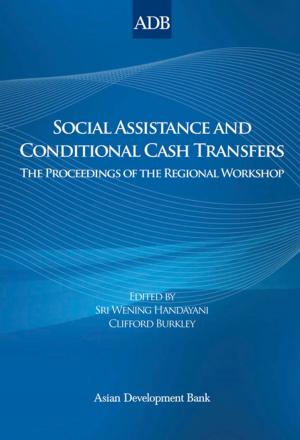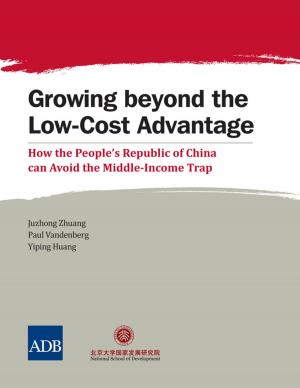Central Asia Regional Economic Cooperation Corridor Performance Measurement and Monitoring
A Forward-Looking Retrospective
Business & Finance, Economics, Economic Development, Nonfiction, Reference & Language, Transportation, Industries & Professions, Industries| Author: | Asian Development Bank | ISBN: | 9789292546908 |
| Publisher: | Asian Development Bank | Publication: | November 1, 2014 |
| Imprint: | Asian Development Bank | Language: | English |
| Author: | Asian Development Bank |
| ISBN: | 9789292546908 |
| Publisher: | Asian Development Bank |
| Publication: | November 1, 2014 |
| Imprint: | Asian Development Bank |
| Language: | English |
This report describes how Central Asia Regional Economic Cooperation (CAREC) corridor performance measurement and monitoring (CPMM) helps to achieve the objectives of the CAREC Transport and Trade Facilitation Strategy and its Implementation Action Plan. It presents the CPMM methodology and discusses the roles and responsibilities of key stakeholders, especially the private sector. It highlights ongoing efforts to provide accurate and reliable indicators despite the challenges of measuring corridor performance in the CAREC context. The extensive depth of data collected and the richness of information that CPMM has been providing since 2009 supports detailed policy analysis and formulation. Trade facilitation indicators have been developed to inform CAREC's Development Effectiveness Review. These indicators provide a basis of comparison or benchmarking of one location (border crossing point or corridor segment) against another in terms of (i) the efficiency of border management agency policies and procedures in regulating trade, (ii) infrastructure quality, and, in due course, (iii) the quality and performance of trade logistics service providers. The four indicators include the standard measures of time and cost as the main components. Selected corridor performance data are then analyzed to identify the physical and non-physical barriers to trade and transit traffic encountered at specific locations, helping to pinpoint the causes of excessive delays and costs. With this study, ADB underscores the value of CPMM for CAREC countries (and for countries participating in other subregional programs) as they craft policies and consider investments to facilitate trade.
This report describes how Central Asia Regional Economic Cooperation (CAREC) corridor performance measurement and monitoring (CPMM) helps to achieve the objectives of the CAREC Transport and Trade Facilitation Strategy and its Implementation Action Plan. It presents the CPMM methodology and discusses the roles and responsibilities of key stakeholders, especially the private sector. It highlights ongoing efforts to provide accurate and reliable indicators despite the challenges of measuring corridor performance in the CAREC context. The extensive depth of data collected and the richness of information that CPMM has been providing since 2009 supports detailed policy analysis and formulation. Trade facilitation indicators have been developed to inform CAREC's Development Effectiveness Review. These indicators provide a basis of comparison or benchmarking of one location (border crossing point or corridor segment) against another in terms of (i) the efficiency of border management agency policies and procedures in regulating trade, (ii) infrastructure quality, and, in due course, (iii) the quality and performance of trade logistics service providers. The four indicators include the standard measures of time and cost as the main components. Selected corridor performance data are then analyzed to identify the physical and non-physical barriers to trade and transit traffic encountered at specific locations, helping to pinpoint the causes of excessive delays and costs. With this study, ADB underscores the value of CPMM for CAREC countries (and for countries participating in other subregional programs) as they craft policies and consider investments to facilitate trade.















